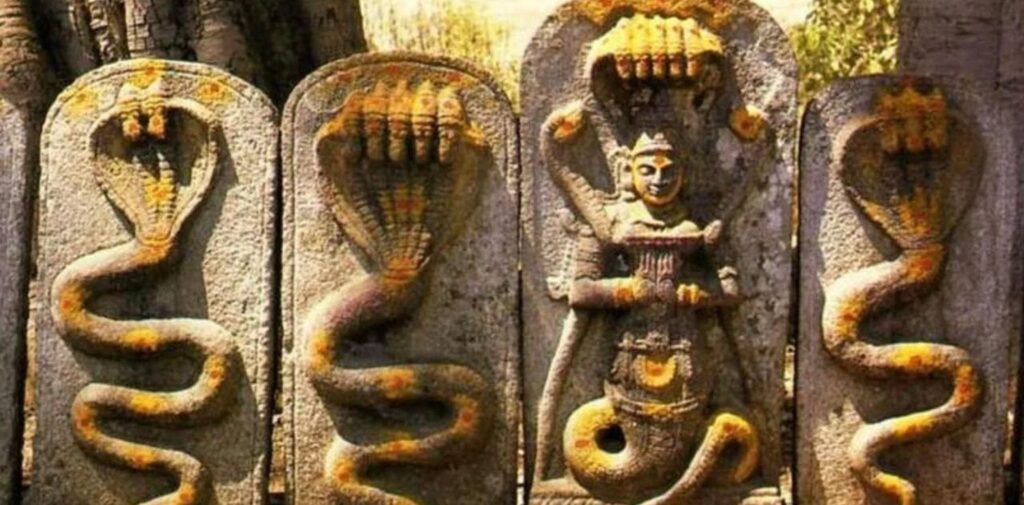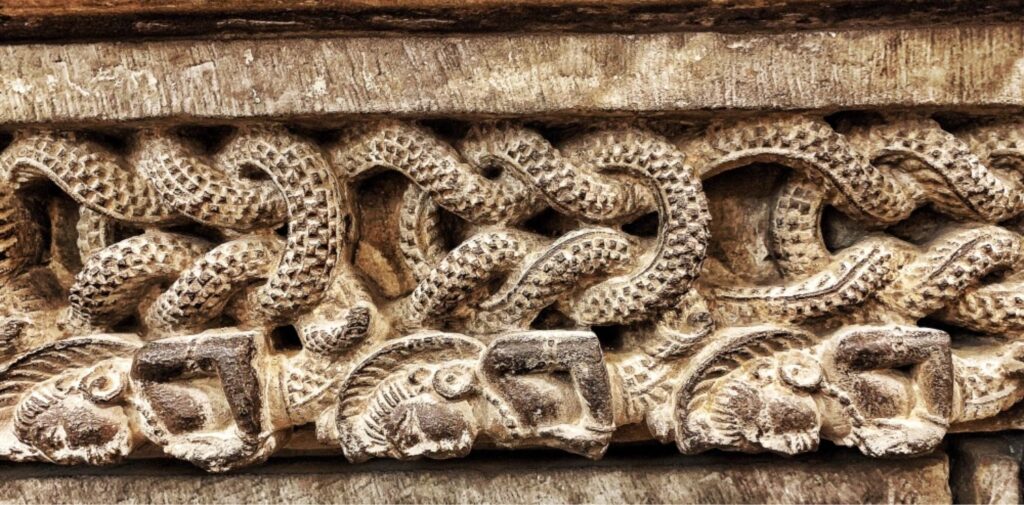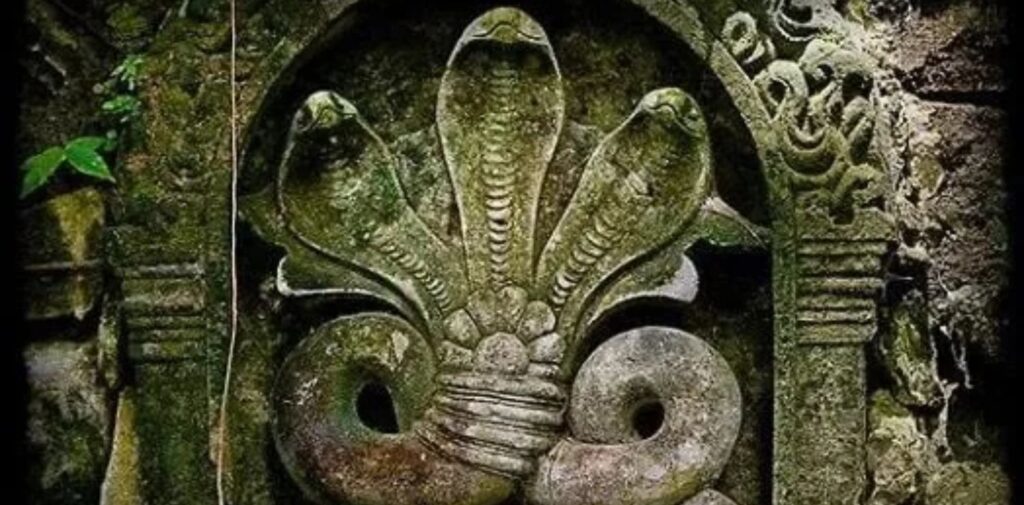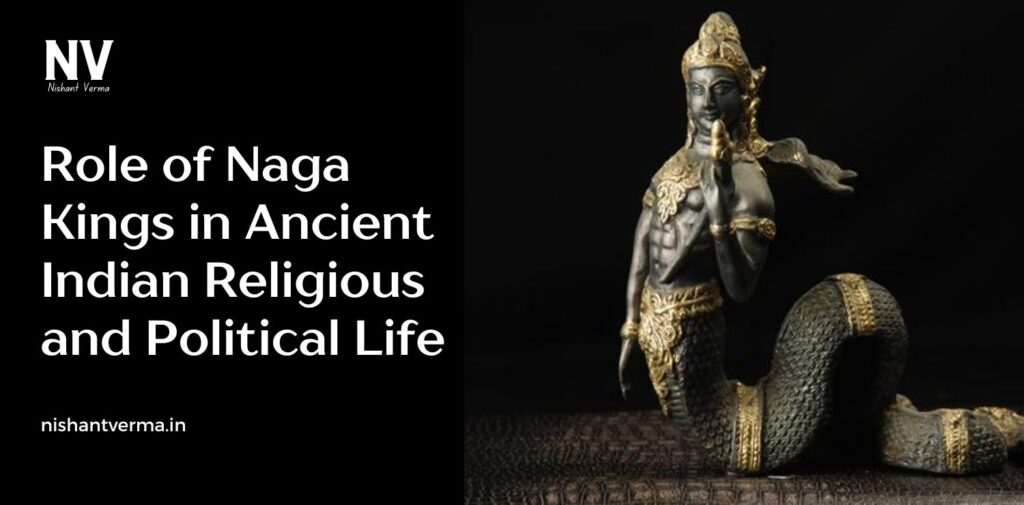In the vast and varied history of ancient India, several dynasties and rulers played pivotal roles in shaping the political and religious landscape of the region. Among these rulers were the Naga kings, a group of influential leaders who emerged during the early centuries of the Common Era. The Naga kings, whose reign spanned across different parts of ancient India, were known for their unique contributions to the political, religious, and cultural life of the time. Though their presence is often overshadowed by more prominent dynasties like the Mauryas and Guptas, the Naga kings had a significant impact on the development of both local and regional traditions in India.
This article delves into the role of Naga kings in ancient India, highlighting their influence on religion, politics, and culture.
Who Were the Naga Kings?
The term Naga in ancient India refers to a group of people who were originally associated with serpent worship and who were believed to have lived in various parts of India. The Naga kings, therefore, belonged to this group and often carried the legacy of serpent worship. These kings are frequently mentioned in ancient texts such as the Mahabharata, Puranas, and the Arthashastra, as well as in historical inscriptions.
Nagas were often portrayed as powerful rulers and warriors, and their presence was seen as an essential part of India’s early political landscape. The Naga kings ruled over regions located in present-day northern India, central India, and southern India.

Naga Kings and Religious Influence
Religion played a central role in the lives of the Naga kings, and they are often depicted as patrons of various religious traditions, particularly those centered around serpent worship and Hinduism. Their association with serpents and the Naga cult became an important part of their identity, both politically and spiritually.
Serpent Worship and Its Significance
Serpent worship was one of the oldest and most widespread religious practices in ancient India. The Nagas, believed to be descendants of divine serpents, had a deep connection with this belief. They worshiped serpents as protectors of water sources and symbols of fertility, wisdom, and immortality. Serpent motifs can be found in ancient art and sculptures throughout India, and many temples dedicated to serpent deities were built during the rule of the Naga kings.
- Naga Kanyas (Naga princesses) were revered as divine figures, often associated with water bodies like rivers, lakes, and wells.
- The Mahabharata mentions the Naga kingdom of Takshashila, where the Naga king Takshaka played a significant role.
The religious influence of the Naga kings was not limited to serpent worship alone. Many of them also supported and participated in Hindu rituals and religious practices, particularly those associated with Shiva, the god of destruction and transformation. The Naga kings’ patronage of Hinduism helped strengthen the connection between the Naga dynasty and the religious practices of the time.
Role of the Naga Kings in Early Buddhism and Jainism
In addition to their influence on Hindu religious practices, some Naga kings were also associated with Buddhism and Jainism. Historical texts suggest that they provided patronage to both religions, contributing to their spread and acceptance.
For instance, the Naga kings of Kashmir were known to have supported Buddhist monks and established Buddhist shrines. This support helped create an environment conducive to the growth of Buddhism in regions that are now parts of modern-day Kashmir and Pakistan.
Some Naga kings also patronized Jainism, a religion that emphasized non-violence and asceticism. It is believed that Jainism flourished in areas ruled by the Naga kings due to the royal endorsement of religious diversity.

Political Role of Naga Kings
The Naga kings played an important role in the political structure of ancient India. While their kingdoms were often smaller compared to the major empires like the Mauryas and Guptas, the Naga rulers managed to maintain power and influence in the regions they governed.
Establishing Sovereignty and Influence
The Naga kings were not only religious leaders but also shrewd politicians and military commanders. They controlled several strategic regions in India and were known to have maintained political power by alliances and military strength. Some Naga kings allied themselves with larger empires like the Maurya Empire and Gupta Empire, while others carved out independent kingdoms.
- The Naga kingdoms were scattered across various regions, including Magadha (in present-day Bihar), Madhya Pradesh, Kashmir, and Deccan Plateau.
- The Naga kings of Kashmir, for example, played an influential role in the region’s political landscape. They often interacted with other contemporary kingdoms and empires.
One of the most notable aspects of Naga political life was their interaction with neighboring kingdoms, which often involved diplomacy, trade, and sometimes military alliances. These interactions helped shape the broader political dynamics of ancient India.
Naga Kings and Local Governance
The Naga kings played an essential role in local governance. They were responsible for maintaining law and order, protecting trade routes, and ensuring the welfare of their subjects. In the Naga-ruled regions, local governance was deeply intertwined with religious beliefs. Rulers were seen not just as political leaders but as divine figures chosen by the gods, often tasked with the protection of sacred sites.
The Naga rulers are said to have governed with a combination of traditional customs and political acumen, gaining the loyalty of the people and ensuring the stability of their kingdoms.

Naga Kings and Their Cultural Contributions
The Naga kings not only impacted religious and political spheres but also contributed significantly to cultural developments in ancient India. Their reigns led to the creation of architectural wonders, advancements in the fine arts, and the establishment of vital cultural traditions.
- Architecture and Temples: Naga kings built many temples dedicated to various deities, including serpent gods, Shiva, and other Hindu gods. The architectural style of these temples often featured serpent motifs, intricate carvings, and large stone sculptures of Naga figures. These temples became cultural centers that attracted pilgrims from all over the Indian subcontinent. Some temples, like the Naga temple at Kashi (modern-day Varanasi), are believed to have been built by Naga kings. These temples played a crucial role in shaping the spiritual and cultural landscape of ancient India.
- Art and Literature: Naga kings also encouraged the development of art, literature, and performing arts. Their patronage of poetry, music, and dance helped shape the cultural fabric of ancient Indian society. Some Naga rulers were also known for their patronage of literary works that focused on mythology, religion, and historical narratives.
Decline of Naga Kings and Their Legacy
While the Naga kings were powerful for several centuries, their influence began to wane with the rise of more prominent dynasties like the Mauryas and Guptas. As the political power of these larger empires expanded, the Naga kingdoms were absorbed into these larger entities or fell into decline.
However, the legacy of the Naga kings remains significant in Indian history. The serpent worship they propagated continued to influence religious practices and beliefs in India. Even today, Naga worship is an integral part of various cultural and religious practices in certain regions of India, especially in Kashmir, Madhya Pradesh, and the Deccan Plateau.
Moreover, their contributions to architecture, governance, and the patronage of religious practices have left a lasting imprint on the cultural and spiritual heritage of India.
Conclusion: The Enduring Influence of the Naga Kings
The Naga kings of ancient India were more than just rulers; they were powerful religious, political, and cultural figures who shaped the early history of the Indian subcontinent. Their devotion to serpent worship, contributions to Hinduism, and political astuteness left a lasting impact on the societies they governed. Even though their power eventually diminished, the legacy of the Naga kings continues to influence religious practices, art, and cultural traditions in modern India.
In essence, the Naga kings played a pivotal role in shaping the religious and political landscape of ancient India, leaving an indelible mark on the country’s history.




